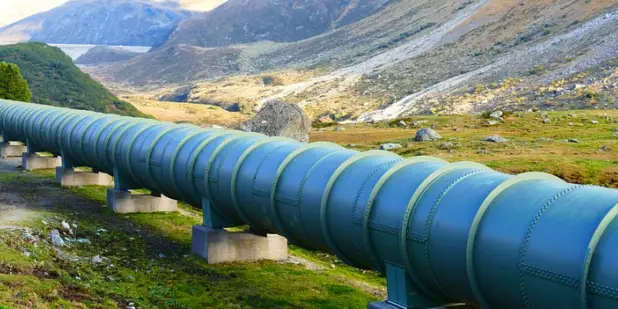EAC Certificate for Pipelines
The EAC certification refers to the certification of products for use in the Eurasian Economic Area (EAEU). The EAEU consists of Russia, Kazakhstan, Belarus, Armenia, and Kyrgyzstan.
The EAC certification is similar to the CE marking in the European Union and confirms the conformity of a product with the technical regulations and safety standards of the EAEU member states.
Specific requirements and procedures apply to the EAC certification and EAC declaration for pipelines. Typically, manufacturers or sellers of pipelines must submit an application for certification to an accredited certification body in EAEU states.
The exact requirements for the safety and quality of pipelines may vary depending on the EAEU member country and technical regulations.
Technical Regulation TR EAEU 049/2020
The Technical Regulation TR EAEU 049/2020 establishes safety requirements for pipelines for the transport of liquid and gaseous hydrocarbons in various phases.
The following aspects are regulated by TR EAEU 049/2020:
- Design and technical studies
- Operation, acceptance, and commissioning
- Construction site and redesign
- Recycling
Furthermore, the regulations define the rules for the EAC conformity assessment of main pipelines. Compliance with the mandatory safety requirements is verified:
- Design documentation
- Technical supervision
- Construction and copyright supervision
- Operational control
- Condition monitoring
- Acceptance
Scope of Application of TR EAEU 049/2020
The regulations of TR EAEU 049/2020 apply to the following pipeline systems:
1. Pipeline systems, including their branches, with a nominal diameter of up to and including DN 1400, with a pressure of 1.2 to 14 MPa.
2. Pipeline systems, including their branches, with a nominal diameter of up to and including DN 1400, with a pressure of over 1.2 to 25 MPa.
The regulations of TR EAEU 049/2020 do not apply to the following pipeline systems:
1. Field pipelines
2. Offshore pipelines
3. Gas distribution networks
4. Compressor stations for autogas
5. Pipelines of autonomous gas networks
6. Pipelines for the transport of light and liquefied hydrocarbons
7. Pipelines for maintaining technological processes
8. Pipelines for conducting technological processes
9. Pipelines for the extraction and processing of raw materials
Process of EAC Certification for Pipelines
The Technical Regulation TR EAEU 049/2020 regulates the safety requirements for oil and gas pipelines as well as other pipelines in the Eurasian Economic Area.
To confirm conformity with the requirements of TR EAEU 049/2020, various forms of conformity assessment are applied to ensure that the pipelines meet the prescribed standards. The main conformity assessment procedures are:
1. Examination of design documents: During the construction phase, the design documents, including the results of geotechnical investigations, are reviewed to ensure they comply with the requirements of TR EAEU 049/2020.
2. Construction supervision and site monitoring: During the construction or renovation phase, technical supervision and site monitoring are conducted to ensure that the pipelines are installed in accordance with the technical regulations and safety standards of TR EAEU 049/2020.
3. State supervision: During the construction phase, state supervision is also conducted to ensure that the construction regulations and standards are adhered to in accordance with TR EAEU 049/2020.
4. Acceptance after completion of construction: After the completion of construction or renovation, the pipelines undergo an acceptance inspection to determine whether they meet the requirements of TR EAEU 049/2020.
5. Operational control and state control: During the operation of the pipelines, regular operational controls are conducted to ensure that the facilities function properly and meet safety standards.
6. Construction supervision and site monitoring during disposal: During the disposal of pipelines, construction supervision and site monitoring are conducted to ensure that the disposal is carried out properly and in an environmentally friendly manner.
These conformity assessment procedures aim to ensure compliance with the requirements of TR EAEU 049/2020 throughout the entire lifecycle of the pipelines, from design through operation to disposal.
It is recommended to consult the relevant authorities or experts for the exact requirements and procedures related to conformity assessment in accordance with TR EAEU 049/2020.
EAC Marking According to TR EAEU 049/2020
The EAC marking refers to the marking of products that comply with the requirements of the Technical Regulation TR EAEU 049/2020 in the Eurasian Economic Area. TR EAEU 049/2020 regulates the safety requirements for oil and gas pipelines as well as other pipelines in the EAEU market.
To obtain the EAC marking according to TR EAEU 049/2020, manufacturers or sellers of pipelines must demonstrate the conformity of their products with the technical regulations. The exact requirements for marking may vary depending on the type of product, but generally include the following steps:
1. EAC conformity assessment: The manufacturer must demonstrate the conformity of their pipelines with the requirements of TR EAEU 049/2020. This can be done through testing, inspections, risk assessments, or compliance with specific EAC standards.
2. EAC certification: The manufacturer must submit an application for certification and/or declaration to an accredited certification body in the EAEU states. The certification body reviews the documents and may conduct additional inspections to confirm conformity.
3. EAC marking: After successful certification, the manufacturer receives the certificate or declaration and is authorized to affix the marking to the pipelines.
The EAC marking indicates that the pipelines comply with the requirements of TR EAEU 049/2020 and can be freely traded in the EAEU market. It also serves as proof for customers, dealers, and supervisory authorities that the products meet the required safety standards.
It is important to note that the exact requirements and procedures for marking according to TR EAEU 049/2020 may differ depending on the type of product and member country.
It is recommended to consult an accredited certification body or an expert in marking to obtain accurate and up-to-date information relevant to the specific case.
Validity Period of the EAC Certification
The validity period of the conformity certificate may vary depending on the type of product and the applicable regulations in the Eurasian Economic Area. In general, the validity period of the conformity certificate is up to five years in most cases.
After this period, the conformity certificate must be renewed to ensure continued compliance with the applicable technical regulations and safety standards.
Contracting Parties for EAC Certification
There are various parties involved in the certification process. The main roles are:
1. Manufacturer: The manufacturer of the product is responsible for compliance with the technical regulations and safety standards of the Eurasian Economic Area. The manufacturer provides the necessary documentation, conducts inspections if necessary, and applies for certification.
2. Certification body: The certification body is an accredited entity in the EAEU states that verifies the conformity of the product with the technical regulations and confirms the certification. The certification body conducts the necessary assessments, inspections, and evaluations to ensure that the product meets the requirements.
3. Authorized representative: For foreign manufacturers with their headquarters outside the EAEU, it is necessary to appoint an authorized representative in the EAEU states. The authorized representative is a person or organization based in the EAC area that acts on behalf of the manufacturer and carries out the necessary steps for certification.
The manufacturer can either work directly with the certification body or communicate through the authorized representative, who acts as an intermediary.
The authorized representative can assist the manufacturer in preparing the necessary documentation, facilitate communication with the certification body, and ensure that the manufacturer complies with the applicable procedures and requirements of the EAEU states.


